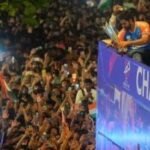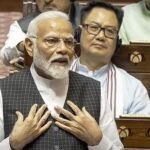Dadasaheb Phalke: Pioneering the Silver Screen Revolution
Introduction: The Birth of Indian Cinema
Dhundiraj Govind Phalke, fondly remembered as Dadasaheb Phalke, stands as an iconic figure in the annals of Indian cinema. Born on 30 April 1870, he is rightfully hailed as “the Father of Indian cinema.” His groundbreaking contributions laid the foundation for a cinematic journey that would resonate through the ages.
The Cinematic Trailblazer: Raja Harishchandra and the Birth of Indian Cinema
In 1913, Dadasaheb Phalke unveiled his magnum opus, “Raja Harishchandra,” marking the inception of Indian cinema. This masterpiece was not just a film; it was the dawn of a new era. Regarded as India’s first full-length feature film, it set the stage for the flourishing cinematic landscape that would follow.
Prolific Artistry: A Tapestry of Films
Dadasaheb Phalke’s creative prowess knew no bounds. Over a career spanning 19 years until 1937, he crafted a staggering 95 feature-length films and 27 short films. Each frame was a brushstroke on the canvas of Indian cinema, contributing to a legacy that endures.
Notable Works: A Cinematic Symphony
Among his distinguished creations, “Mohini Bhasmasur” (1913), “Satyavan Savitri” (1914), “Lanka Dahan” (1917), “Shri Krishna Janma” (1918), and “Kaliya Mardan” (1919) stand as pillars of cinematic brilliance. These works not only showcased his directorial finesse but also reflected his ability to weave captivating narratives.
The Culmination of an Epoch: Legacy and Impact
Dadasaheb Phalke’s influence extended far beyond the silver screen. He sculpted the cinematic identity of a nation, fostering an industry that would grow into one of the world’s largest. His pioneering spirit and artistic vision left an indelible mark, shaping the trajectory of Indian cinema for generations to come.
Conclusion: A Cinematic Maestro Remembered
Dadasaheb Phalke’s journey wasn’t just about films; it was a cultural revolution. His vision ignited a flame that continues to illuminate the vast expanse of Indian cinema. As we celebrate the legacy of this visionary, we honor not just a filmmaker but a trailblazer who turned dreams into moving images and paved the way for the magic of cinema to enchant the hearts of millions.
Dhundiraj Phalke: Crafting Dreams Through Art
Early Years: Nurturing Roots in Trimbak
Dhundiraj Phalke, the luminary who would later be known as Dadasaheb Phalke, was born on 30 April 1870, in Trimbak, Bombay Presidency. Into a Chitpavan Brahmin family, his childhood unfolded in a culturally rich environment. His father, Govind Sadashiv Phalke, a Sanskrit scholar and Hindu priest, imparted traditional wisdom, while his mother, Dwarkabai, provided the nurturing foundation for a family of seven siblings.
Educational Pursuits: From Trimbak to Bombay
Phalke’s journey in education commenced in Trimbakeshwar, and he later moved to Bombay for matriculation. The scholarly pursuits continued as he joined the Sir J. J. School of Art in 1885, embarking on a one-year course in drawing. His academic ventures unfolded further when the family shifted to Bombay due to his father’s appointment as a Sanskrit professor at Wilson College.
Artistic Exploration: A Journey in Colors
Entering the realm of fine arts, Phalke enrolled in Kala Bhavan at the Maharaja Sayajirao University of Baroda. His artistic prowess blossomed as he completed courses in oil painting and watercolor painting in 1890. Proficiency in architecture and modeling added layers to his creative palette. In a pivotal turn, he acquired a film camera in the same year, marking the inception of his experimentation with photography, processing, and printing.
Recognition and Expertise: Honing Skills in Baroda
Phalke’s talents were acknowledged with a gold medal for his model of an ideal theatre at the 1892 Industrial Exhibition of Ahmedabad. A fan’s gift of a “costly” still photography camera further fueled his passion. Delving deeper, he pursued a six-month course to master the intricacies of preparing half-tone blocks, photo-lithio, and three-color ceramic photography in 1891.
Artistic Odyssey: Ratlam and the Pursuit of Knowledge
Principal Gajjar of Kala Bhavan recognized Phalke’s potential and sent him to Ratlam. Here, under the guidance of Babulal Varuvalkar, Phalke delved into three-color blockmaking, photolitho transfers, colotype, and darkroom printing techniques. This immersive experience laid the groundwork for his future ventures in the world of visual storytelling.
Dhundiraj Phalke’s early years were a kaleidoscope of learning, creativity, and exploration. Little did the aspiring artist know that these formative experiences would pave the way for his monumental contribution to Indian cinema.
Dhundiraj Phalke’s journey began on April 30, 1870, in Trimbak, Bombay Presidency. Born into a Chitpavan Brahmin family, his early education and artistic endeavors led him to the Sir J. J. School of Art in Bombay in 1885.
In 1893, granted access to Kala Bhavan’s photo studio, Phalke initiated “Shri Phalke’s Engraving and Photo Printing.” Financial struggles prompted a shift to Godhra in 1895, where he embraced professional photography. Tragedy struck in the 1900 plague epidemic, leading to the loss of his wife and child.
Returning to Baroda, Phalke faced resistance due to a prevailing myth about cameras. Despite convincing the Prince of Baroda of photography’s benefits, business challenges persisted. He turned to painting stage curtains, gaining basic training in drama production and minor roles in plays.
Phalke’s encounter with a German magician in Baroda sparked an interest in magic tricks, influencing his later use of trick photography in filmmaking. In 1902, he remarried Girija Karandikar, renaming her Saraswati. Employment at the Archaeological Survey of India followed in 1903, but his passion led him to establish “Phalke Engraving and Printing Works” in Lonavla in 1906.
The printing press thrived, collaborating with Ravi Verma Press and eventually relocating to Dadar, Bombay. In 1908, the press transformed into “Laxmi Art Printing Works” with Purushottam Mavji as a partner. Phalke’s quest for advanced color printing machinery took him to Germany in 1909.
However, differences with partners led to Phalke’s departure, emphasizing his commitment over monetary gain. The period from 1893 to 1911 marked a significant chapter of varied experiences, from artistic pursuits to entrepreneurship, setting the stage for Phalke’s transformative venture into filmmaking.
In 1911, Phalke’s encounter with cinema, particularly “The Life of Christ” in Bombay, ignited his vision for “moving pictures.” His exploration included collecting film-related material from Europe and showcasing movies using candlelight projection. Despite a strain on his eyes, Phalke persisted, regaining eyesight with the aid of multiple spectacles.
Phalke’s dream to learn filmmaking in London materialized in 1912, thanks to financial support from Yashwantrao Nadkarni and Abasaheb Chitnis. In London, he connected with “Bioscope Cine-Weekly,” met editor Mr. Cabourn, and gained insight from film director Cecil Hepworth. Returning to India, Phalke founded “Phalke Films Company” on April 1, 1912.
This period showcased Phalke’s resilience, creative evolution, and unwavering dedication, setting the stage for his groundbreaking contributions to Indian cinema.









